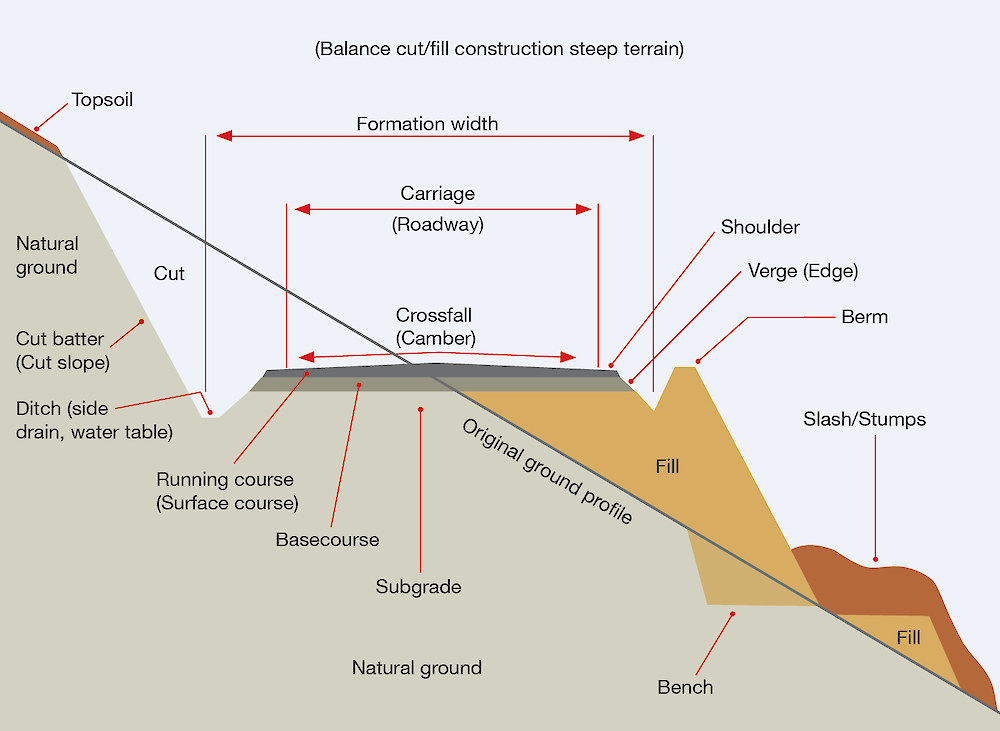A wide range of terms are used in forest road engineering. At times, more than one term is used for the same thing. Engineers, earthworks coordinators and contractors can talk at cross-purposes because definitions may not be consistent. For example, is a ditch a water table or a side drain, or are they all the same thing? Are culverts used to drain water tables, drains or ditches or are these used to cross rivers? Is a river a stream or a waterway or are these the same thing too?
It may seem rather academic, but operationally, if you are not talking the same language challenges will arise. The regulations set out in the National Environmental Standards for Plantation Forestry (NES-PF) provide very specific definitions. For example, a forestry track versus a forestry road.
A number of illustrations are used throughout this Manual to help clarify the terminology, such as the one below for a typical forest road cross section. To support a better understanding of terminology, a comprehensive compendium of terms has been included in the Appendices.
Typical roading terminology